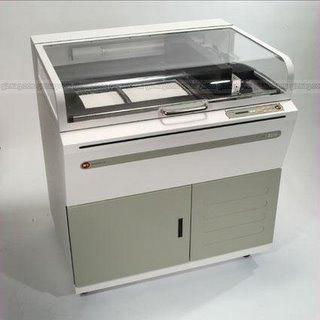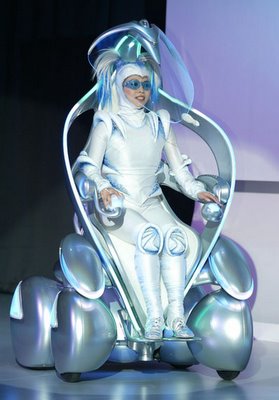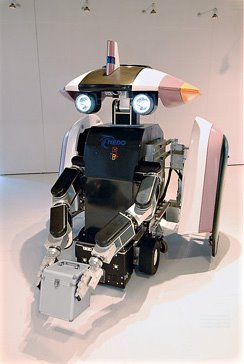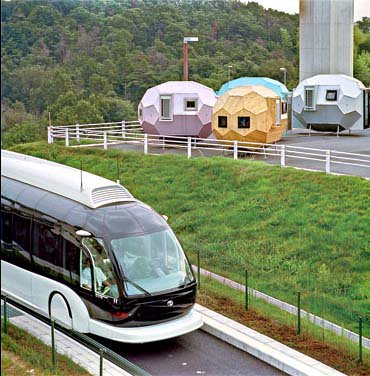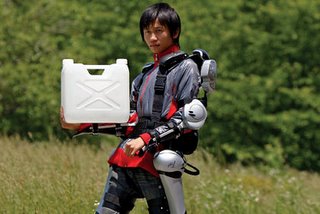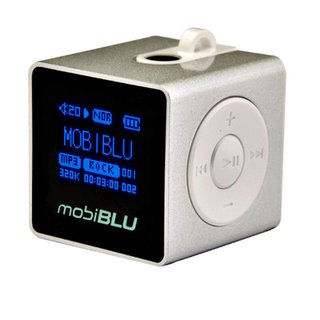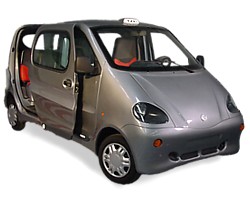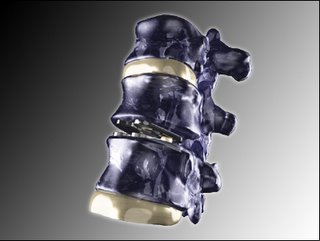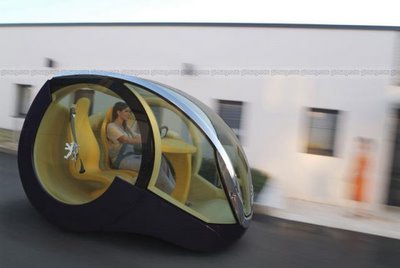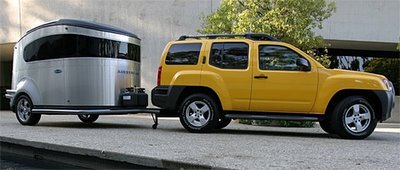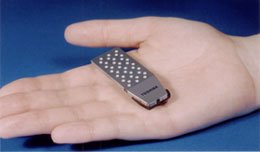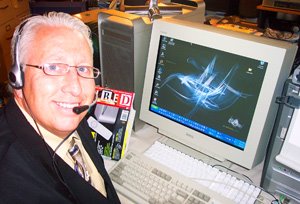The first time you meet a robot can be pretty disappointing. Hollywood has taught us what to expect: a trusty sidekick like
R2-D2, a gleaming robo-maid like The Jetsons'
Rosey or a cyberassassin like the
Terminator. The reality is very different: most robots are either mindless factory drones or blue-sky academic projects that cost a fortune, break down a lot and don't do very much. Most of them don't even have death rays.

Meet Roomba, a new housecleaning robot spawned by the Massachusetts Institute of Technology's Artificial Intelligence Lab and built by a Somerville, Mass., company called iRobot. Roomba's function is a humble one: it's designed to vacuum your living room while you're otherwise engaged. But Roomba also represents a technological watershed: it's the first robot ever built that is designed to live in your home, serve a useful purpose and be priced for the mass market — at $199, it costs about the same as a mid-range vacuum cleaner. Roomba isn't quite Rosey the Robot, but it just might be Rosey's great-great-grandparent.
Roomba had three parents:
Rodney Brooks, director of M.I.T.'s AI Lab, and two of his former graduate students,
Colin Angle and
Helen Greiner. Brooks, who was featured in the 1997 documentary
Fast, Cheap, and Out of Control, is arguably the world's greatest living roboticist. A voluble Australian, he's famous for finding radical, counterintuitive approaches to intractable problems; the
nasa rover that went to Mars aboard Pathfinder was designed using techniques he pioneered.
With his two collaborators, Brooks spent the 1980s building experimental robots such as
Genghis and
Attila, six-legged insectoidal creatures with multiple onboard computers and dozens of sensors. These robots looked cool and cost a lot but on a practical level accomplished almost nothing. "You go into robotics thinking you're going to change the world," says Angle, who looks like a younger, nerdier Quaid brother. "You're not going to change the world with a million-dollar robot." In 1990 Angle, Greiner and Brooks founded iRobot hoping to build practical, affordable robots for everyday life.
But first they had to learn some hard lessons about those difficult creatures known as human beings. A robot is essentially a computer with a body, but
iRobot wanted to market its robots as household appliances. And it turns out people have higher standards for appliances than they have for computers. Appliances have to be cheap, simple and reliable; nobody is going to buy a $2,000 vacuum cleaner that requires a Ph.D. in engineering and has to be rebooted twice a day. Leaving the ivory tower for the iRobot team was a culture shock. "We had to learn about plastics," Angle sighs. "We had to learn about Far East manufacturing. We learned that if you haven't had a sit-down, drag-out, pound-on-the-table argument over a nickel, you don't understand consumer products."
The iRoboters also had to learn about a subject that most scientists never really study: cleaning floors. They got down on their knees and worked out the physics of how dust collects and circulates. Vacuum cleaners consume large amounts of electricity, so they had to invent a new kind of low-power vacuum that would allow
Roomba to run on rechargeable batteries. They ran their baby bot over "torture tracks" to test its mobility. They spent a night in a Target store to watch industrial cleaners at work.
Twelve years and 30 prototypes later, Roomba was born: a 5-lb. 10-oz., 13.5-in.-wide household robot that looks more like a horseshoe crab than a human being. Turn it on, and it springs to life with a surprising sense of alertness--almost as if it had a personality.
Roomba's vision is limited, so it ranges around the room partly at random, covering open areas in widening spirals, then carefully following walls when it finds them, lightly bouncing off the occasional lamp or chair leg. It navigates using a set of simple rules called "heuristics";
iRobot originally developed
Roomba's pathfinding program for a military robot designed to clear minefields. When
Roomba determines — based on those heuristics, the size of the room and the number of obstacles it encounters on its travels — that it has covered every part of the room several times over, it stops, beeps cheerfully and shuts itself down.
As maids go, Roomba isn't perfect. Because of its shape, it leaves a little fluff in the corners where it can't quite reach. And if a couch is just the wrong height,
Roomba can get wedged underneath. It helps to make the room
Roomba-friendly by clearing up clutter and closing doors before you let it loose.
"It's a robot, it's not Einstein."
But
Roomba gets the job done — as long as the job isn't too big — and it sure beats doing it yourself. One day
Roomba will do for vacuuming what dishwashers did for dishwashing.
That day isn't here quite yet, but it's coming, and perhaps soon. Don't believe it? The big players are already moving in; companies like Hoover, Electrolux and Dyson are working on their own vacuum-cleaner robots, though they have yet to bring one to market in the U.S. Think of what personal computers were like in the late '70s. Nobody believed then that anybody would want a PC in their home, but then companies like Apple and Radio Shack made PCs affordable, and a killer app — word processing — made them indispensable. Now we can't imagine life without them.
The first shot in the robot revolution has been fired, and the race to build the first successful PR (personal robot) is on. Is vacuuming the killer app robots have been waiting for? Is iRobot the first of the (gulp!) botcoms? If it is, one thing is clear: Roomba won't be the only one that cleans up.
Note from Technophile: Coming up next is iRobot's "Scooba" floor-washing robot.
If you love robots like I love robots, why not let the world know? Just click on the image below and you can order a t-shirt (and/or other stuff) with this robotic image printed on them:

